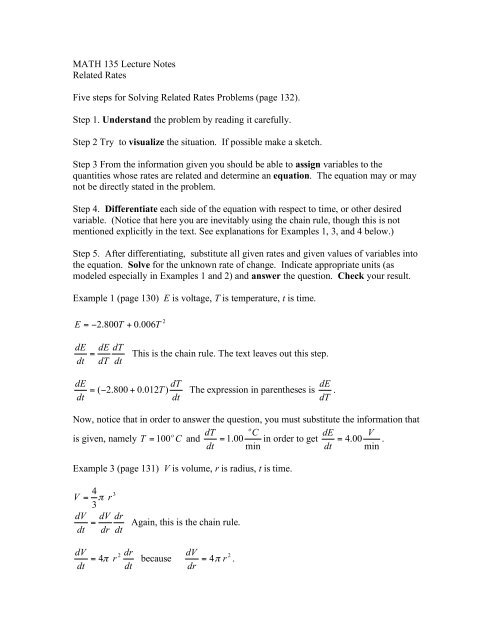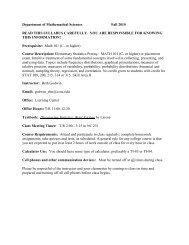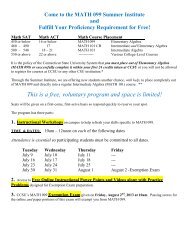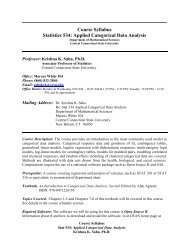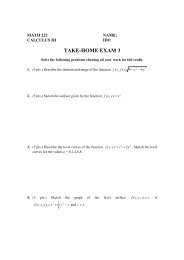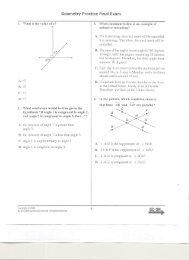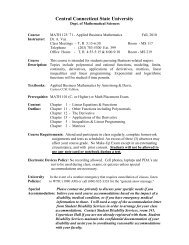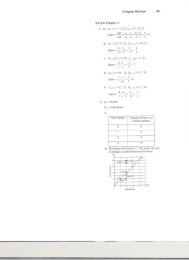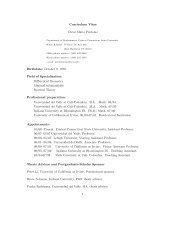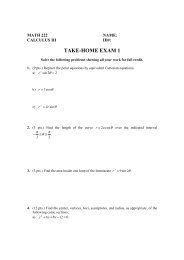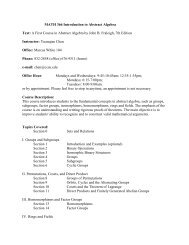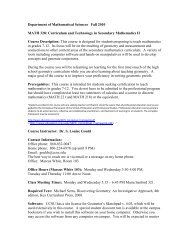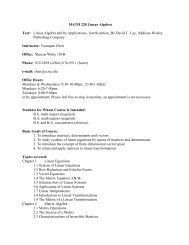4.4 Related rates
4.4 Related rates
4.4 Related rates
Create successful ePaper yourself
Turn your PDF publications into a flip-book with our unique Google optimized e-Paper software.
MATH 135 Lecture Notes<br />
<strong>Related</strong> Rates<br />
Five steps for Solving <strong>Related</strong> Rates Problems (page 132).<br />
Step 1. Understand the problem by reading it carefully.<br />
Step 2 Try to visualize the situation. If possible make a sketch.<br />
Step 3 From the information given you should be able to assign variables to the<br />
quantities whose <strong>rates</strong> are related and determine an equation. The equation may or may<br />
not be directly stated in the problem.<br />
Step 4. Differentiate each side of the equation with respect to time, or other desired<br />
variable. (Notice that here you are inevitably using the chain rule, though this is not<br />
mentioned explicitly in the text. See explanations for Examples 1, 3, and 4 below.)<br />
Step 5. After differentiating, substitute all given <strong>rates</strong> and given values of variables into<br />
the equation. Solve for the unknown rate of change. Indicate appropriate units (as<br />
modeled especially in Examples 1 and 2) and answer the question. Check your result.<br />
Example 1 (page 130) E is voltage, T is temperature, t is time.<br />
E = ! 2.800T<br />
+ 0.006T<br />
2<br />
dE dE dT = This is the chain rule. The text leaves out this step.<br />
dt dT dt<br />
dE<br />
dt<br />
dT<br />
dE<br />
= (!<br />
2.800 + 0.012T<br />
) The expression in parentheses is .<br />
dt<br />
dT<br />
Now, notice that in order to answer the question, you must substitute the information that<br />
o<br />
o dT C<br />
dE V<br />
is given, namely T = 100 C and = 1.00 in order to get = 4.00 .<br />
dt min<br />
dt min<br />
Example 3 (page 131) V is volume, r is radius, t is time.<br />
4 3<br />
V = ! r<br />
3<br />
dV dV dr = Again, this is the chain rule.<br />
dt dr dt<br />
dV dr<br />
= 4! r<br />
2 because<br />
dt dt<br />
dV<br />
dr<br />
2<br />
= 4!<br />
r .
dV dr<br />
Notice that in this case you are given r and . We must solve for .<br />
dt<br />
dt<br />
Example 4 (page 131). F is force, r is distance from the center of the earth, and t is time.<br />
Note that this is a variation problem so we must first solve for k.<br />
The chain rule is used here in the form<br />
dF dF dr = .<br />
dt dr dt<br />
Homework, with hints:<br />
Pages 132-133:<br />
1 is similar to Example 1.<br />
dD<br />
3. you’ll have to use the chain rule to find . dx<br />
dD<br />
Then apply the chain rule again to find =<br />
dt<br />
9 use the formula for the area of a circle.<br />
11. Volume of a cube with edge e is given by<br />
dD<br />
dx<br />
dx<br />
dt<br />
3<br />
V = e .<br />
13 another inverse variation example like Example 4.<br />
15 is similar to Example 3.<br />
dx . Note that is the plane’s speed.<br />
dt<br />
23 requires a proportion using similar triangles. Let s represent the length of the shadow<br />
and x the distance from the man to the light pole. Solve for s in terms of x<br />
In addition, here are two more max-min problems.<br />
Pages 149 and 150: 27 and 31.


